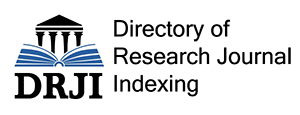FINANCIAL LIBERALIZATION, WEIGHTED MONETARY AGGREGATES AND MONEY DEMAND IN INDONESIA
DOI:
https://doi.org/10.51200/lbibf.v8i.2571Abstract
This study investigates the significance of Divisia monetary aggregates in formulating the monetary policy in Indonesia. A money demand function has been constructed to compare the relative performance for Simple-sum M1 and M2 (SSM1 and SSM2) and Divisia M1 and M2 (DM1 and DM2) monetary aggregates. The econometrics testing procedures that have been utilized in the estimation include unit root test, cointegration test, Vector Error Correction Model (VECM), Granger causality test and residual test. Empirical findings indicate that only DM1 model yields credible result amongst all of the money demand models. The obtained coefficients for DM1 model are consistent with a prior theoretical expectation and carry plausible magnitudes. The DM1 model is satisfactory as proven by the diagnostic tests. Divisia monetary aggregates are proven not only theoretical superior but also empirical valid as useful measurement of money for the case of Indonesia. The central bank of Indonesia may consider using Divisia monetary aggregates as the policy variables in formulating monetary policy.


















